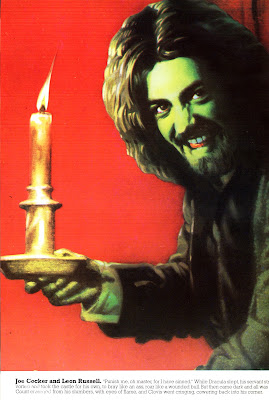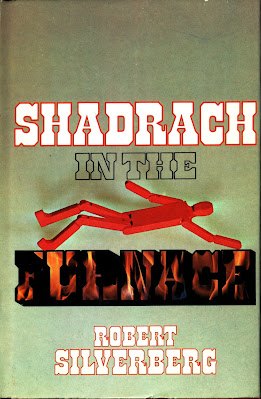'Rock Dreams'
by Guy Peellaert and Nik Cohn
Guy Peellaert was born in Brussels in 1934 and in the mid-1960s moved to Paris to pursue a career in commercial art. In 1966 a French magazine published Peellaert's Pop Art comic, 'Les Aventures de Jodelle'. 'Jodelle was considered an exemplar of hip and groovy and brought 'Continental' renown to Peellaert.In the early 70s Peellaert teamed up with the British rock critic and writer Nik Cohn (b. 1946) to do a book of pictures of prominent rock and roll artists. 'Rock Dreams' was published by Popular Library in January 1973 as a trade paperback, and became the iconic rock art book of the 1970s.
The story goes that Mick Jagger saw the proofs of the book and promptly invited Peellaert to do the cover for the Stones' forthcoming (i.e., 1974) album It's Only Rock and Roll.
'Rock Dreams' is 170 pages of art depicting individual and group performers in not just the genre of rock, but the genres of blues, 'adult contemporary', and country and western.
The book is chronological in order, going from the birth of rock in the 1950s, up to the early 1970s.Peellaert's work speaks for itself. It depicts its subjects in a idealized, satirical, or even poignant manner. Nik Cohn's captions are a mixed bag. Some simply are fatuous (Gene Vincent is like a 'maimed black leather animal'), while others, such as Crosby, Stills, Nash, and Young ('Highway songs full of light and space' ) ably complement the artwork.
After 'Rock Dreams', Cohn went on to write for the U.S. media market. His 1976 article for New York magazine, 'Tribal Rites of the New Saturday Night', became the basis for the movie Saturday Night Fever. Later it was revealed that Cohn had fabricated much of the events supposedly profiled in the article.
For his part, Peellaert went on to do two more books of paintings of prominent personalities in the world of movies, popular culture, and politics. 'The Big Room' (1986) and '20th Century Dreams' (1999) focused on Las Vegas, and 'imaginary' historical encounters, respectively. It's hard to overestimate the impact of 'Rock Dreams'. I was fortunate to get a copy of the 1973 edition in late 1970s (maybe from a remainders table at Waldenbooks).
In their review of April 11, 1974, Rolling Stone magazine labeled the book 'Teen Fantasies as Art'.
It was an essential part of every stoner's library during the 1970s, and Peellaert's approach was mimicked by other artists, such as John Youssi, who provided the illustration below for a March, 1976 Playboy article about Bruce Springsteen:
Baby Boomers are the audience for 'Rock Dreams'. I can't see anyone under 50 having much interest in the book, apart from admiring the art. Some of the portrayed artists nowadays are fringe figures: Johnny Ray, Annette Funicello, P.J. Proby, Conway Twitty, and Cilla Black. It's difficult to imagine those names resonating with anyone who came of age during the MTV and CD eras. And I can't see anyone in the cohorts of Gen-Y, or Gen-Z, having sufficient familiarity with even the major performers profiled in 'Rock Dreams', to grasp the insinuations couched in many of Cohn's captions.
Copies of the 1973 edition of 'Rock Dreams' fetch high prices ($40 and up, at Abebooks). The Taschen Books reprint of 2003 is a little more affordable.


















































































